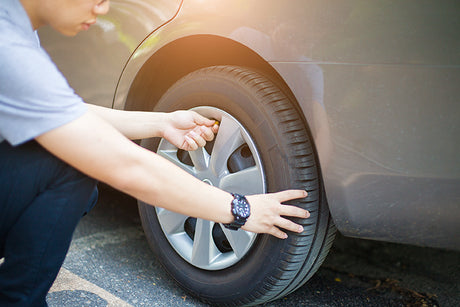Recognising when it's time to replace your tyres is crucial for ensuring vehicle safety, optimal performance, and extending the lifespan of your tyres. As the primary point of contact between your vehicle and the road, tyres play a critical role in providing traction, handling, and braking capabilities. In this guide, we'll explore the key indicators to help you determine when it's time to replace your tyres.
Tread Depth
The tread depth of your tyres is a primary indicator of their condition. In New Zealand, the legal minimum tread depth is 1.5mm. However, for optimal safety and performance, it's recommended to replace your tyres when the tread depth reaches 3mm. You can easily measure tread depth using a tread depth gauge or the age-old "coin test" – insert a 20-cent coin into the tread, and if the tread doesn't reach the top of the kiwi's head, it's time to replace the tyre.
Uneven Wear Patterns
Inspect your tyres for any signs of uneven wear patterns, such as feathering, cupping, or scalloped wear. Uneven wear can be indicative of alignment issues, suspension problems, or improper tyre inflation. Addressing these issues promptly is essential to preventing further damage to your tyres and ensuring a smoother and safer driving experience.
Age of the Tyres
Tyres age, even if they have sufficient tread depth and appear to be in good condition. As a general rule, tyres should be replaced every 3 - 5 years, regardless of tread wear. This is because tyres deteriorate over time due to factors such as exposure to sunlight, heat, and environmental conditions. To determine the age of your tyres, look for the DOT (Department of Transportation) code on the sidewall, which indicates the week and year of manufacture.
Visible Damage
Inspect your tyres regularly for any visible damage, such as cuts, cracks, bulges, or punctures. These can compromise the structural integrity of the tyre and pose serious safety risks. If you notice any visible damage, it's important to have the tyre inspected by a professional and consider replacement if necessary.
Driving Conditions
Your driving habits and the conditions in which you drive can also impact the lifespan of your tyres. If you frequently drive on rough or poorly maintained roads, your tyres may wear out more quickly. Similarly, aggressive driving, heavy loads, and frequent towing can accelerate tyre wear and necessitate earlier replacement.
By being aware of these key indicators, you can make informed decisions about when to replace your tyres, ensuring your safety on the road and prolonging the life of your tyres. Regular inspections, proper maintenance, and timely replacements are essential for maintaining optimal tyre performance and overall vehicle safety. Remember, your tyres are a critical component of your vehicle, and knowing when to replace them is key to a safe and enjoyable driving experience.








